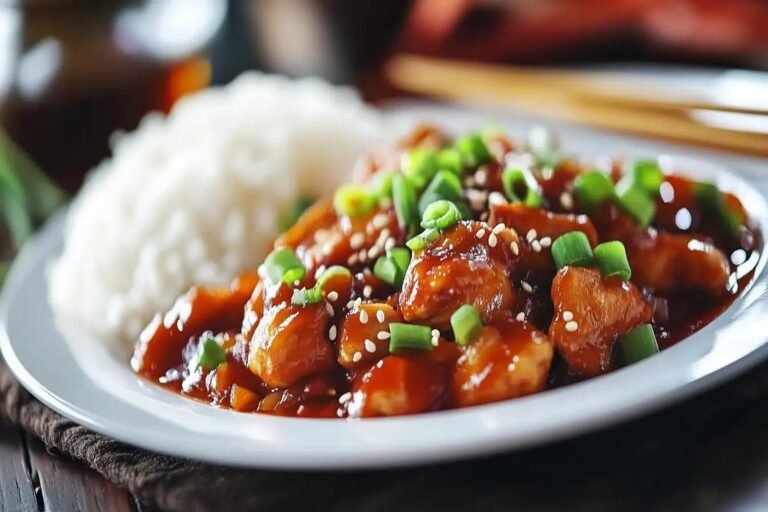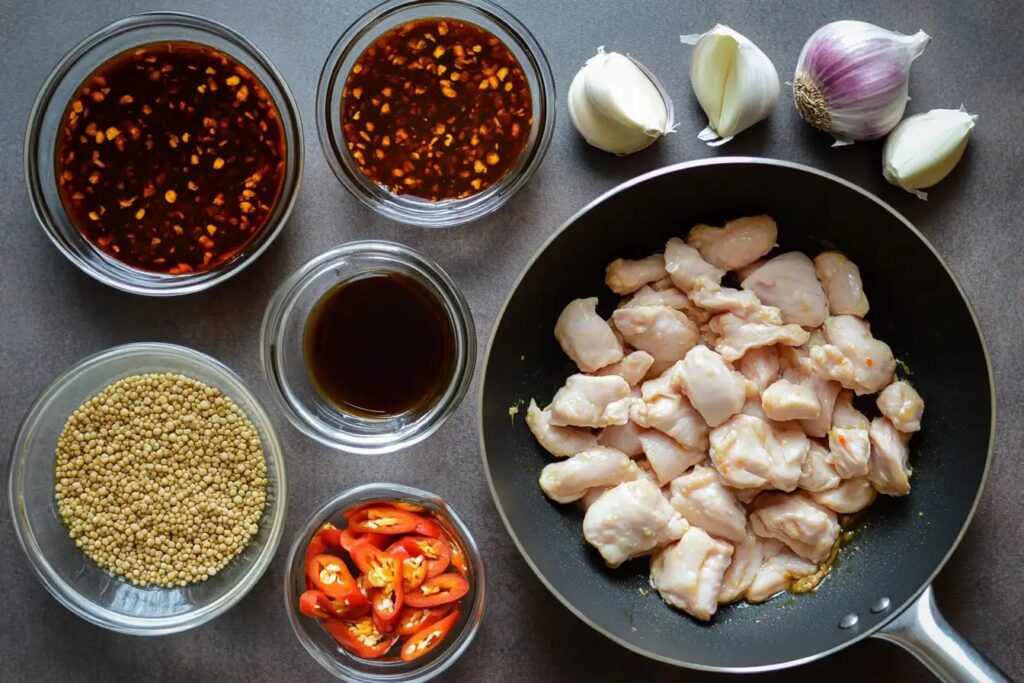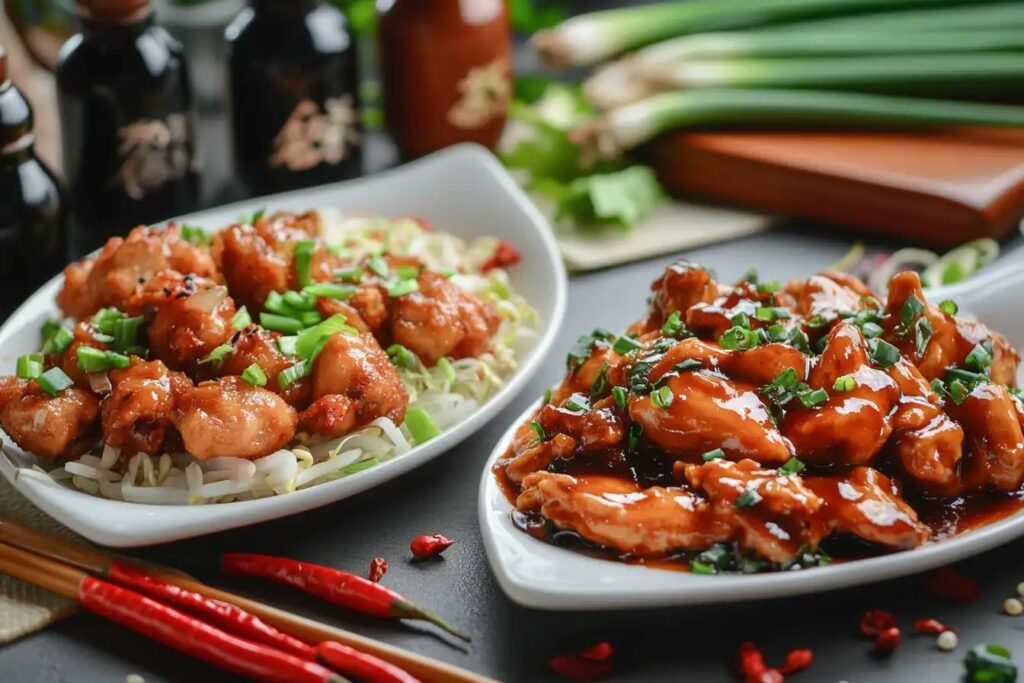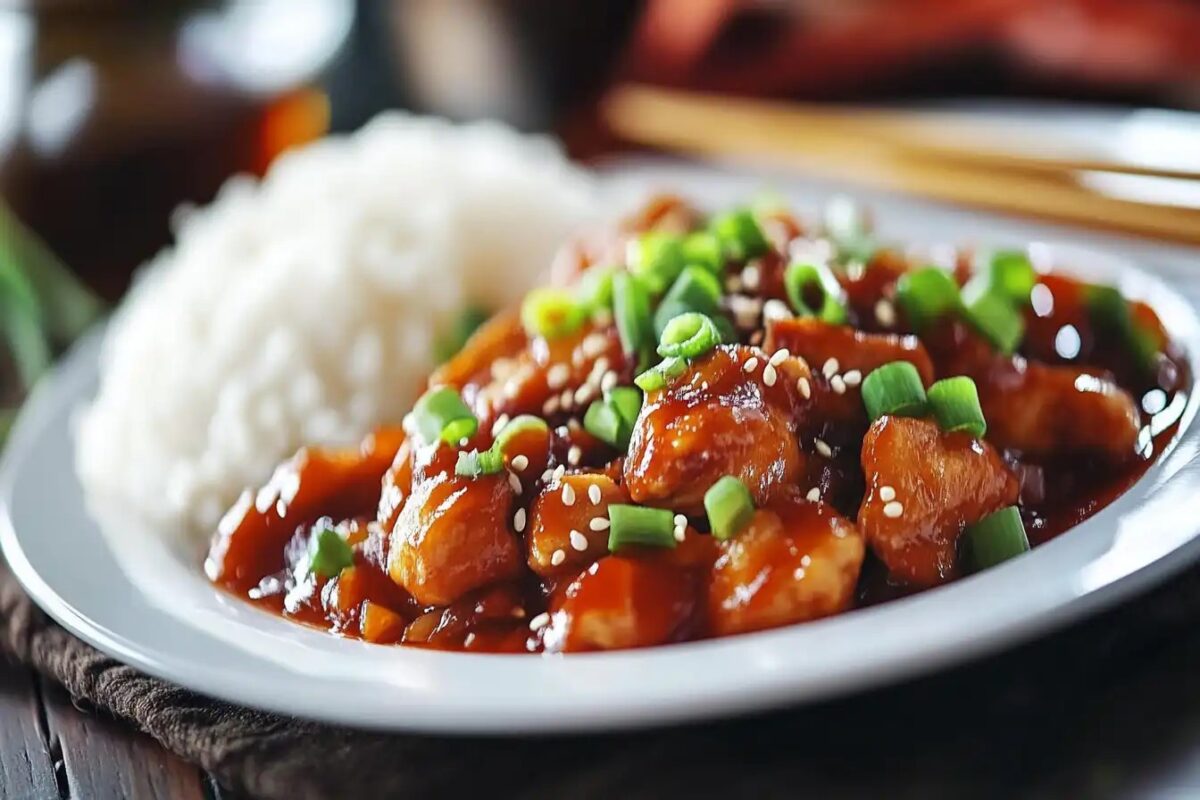Chicken Manchurian is a beloved dish that fuses the bold flavors of Chinese cuisine with the spices of Indian cooking. This mouthwatering dish, with its tangy sauce and crispy chicken, has carved out a special place in kitchens and restaurants worldwide. In this article, we’ll uncover the secrets behind what chicken manchurian is made of, explore its origins, variations, and preparation techniques, and answer frequently asked questions. By the end, you’ll be ready to whip up this iconic dish like a pro!
Introduction to Chicken Manchurian
Origin of Chicken Manchurian
Chicken Manchurian is a hallmark of Indo-Chinese cuisine, a style of cooking that emerged when Chinese immigrants in India adapted their recipes to local tastes. This culinary fusion brings the best of both worlds savory, umami-rich Chinese techniques married with Indian spices. Chef Nelson Wang, a pioneer of Indo-Chinese cuisine, is often credited with inventing this dish in Mumbai in the 1970s.
Why Is It Popular?
The popularity of Chicken Manchurian lies in its universal appeal. It’s a crowd-pleaser, combining crispy, deep-fried chicken chunks with a flavorful sauce that hits all the right notes: sweet, tangy, spicy, and savory. Whether served as a snack, starter, or main course, it satisfies diverse palates, making it a go-to choice for parties, family dinners, and casual dining.
Fusion Cuisine: Indian-Chinese Culinary Connection
Chicken Manchurian is a flagship dish of Indian-Chinese cuisine, a unique hybrid developed to cater to Indian taste buds. Bold flavors like garlic, ginger, soy sauce, and green chilies define this style, ensuring each bite is a burst of flavor. This fusion showcases how culinary traditions evolve to create something new and exciting, appealing to food lovers across the globe.
Ingredients of Chicken Manchurian
Key Ingredients: Chicken, Sauce, and Spices
Chicken Manchurian is built on a foundation of simple yet flavorful ingredients. The star of the dish is bite-sized chicken pieces, typically marinated and deep-fried to achieve a crispy exterior. Boneless chicken thighs or breasts are often preferred for their tenderness. The sauce, however, takes center stage, blending soy sauce, ketchup, chili sauce, and a dash of vinegar to create the perfect balance of sweet, spicy, and tangy flavors.
Aromatic ingredients like ginger, garlic, and green chilies further enhance the taste, while cornstarch ensures the sauce has a luscious, thick texture. Each element complements the others, resulting in a harmonious dish.
Vegetable Additions: Common Variations
While the classic Chicken Manchurian recipe sticks to chicken and sauce, many variations include vegetables like bell peppers, carrots, and spring onions. These vegetables not only add crunch but also provide a splash of color, making the dish visually appealing.
Vegetarian and vegan adaptations replace chicken with alternatives like tofu or cauliflower, proving that this versatile recipe can cater to diverse dietary preferences.
Sauce Components: Sweet, Spicy, and Savory Elements
The Manchurian sauce is what makes this dish truly special. Its blend of soy sauce, chili sauce, tomato ketchup, and a hint of sugar creates a multidimensional flavor profile. Garlic and ginger infuse a savory depth, while green chilies bring the heat. Vinegar adds a tangy finish, ensuring that every bite delivers a burst of flavor.
Print
What Is Chicken Manchurian Made Of? Discover The Secret Ingredients
A crispy and saucy Indo-Chinese favorite, Chicken Manchurian combines marinated fried chicken with a bold garlic-chili sauce.
- Total Time: 40 mins
- Yield: 4 servings 1x
Ingredients
500g boneless chicken (thighs or breasts)
2 tbsp cornstarch
2 tbsp all-purpose flour
1 egg
1 tbsp soy sauce
1 tsp garlic paste
1 tsp ginger paste
Salt to taste
Oil for frying
1 tbsp minced garlic
1 tbsp minced ginger
2 green chilies, chopped
2 tbsp soy sauce
1 tbsp chili sauce
2 tbsp ketchup
1 tsp vinegar
1 tsp sugar
1/2 cup water
1 tsp cornstarch (mixed in water)
2 tbsp chopped spring onions
Instructions
1. Mix chicken with cornstarch, flour, egg, soy sauce, garlic, and ginger paste. Marinate for 30 minutes.
2. Heat oil and deep-fry chicken pieces until golden and crispy.
3. In a separate pan, heat a tablespoon of oil. Sauté garlic, ginger, and green chilies until fragrant.
4. Add soy sauce, chili sauce, ketchup, vinegar, sugar, and water. Mix well.
5. Pour in cornstarch slurry. Stir until the sauce thickens.
6. Add fried chicken to the sauce. Toss to coat well.
7. Garnish with spring onions and serve hot.
Notes
You can air-fry or bake the chicken for a healthier version.
Adjust spice levels by increasing or reducing green chilies or chili sauce.
- Prep Time: 15 mins
- Cook Time: 25 mins
- Category: Main Course
- Method: Stir-Fry
- Cuisine: Indo-Chinese
Nutrition
- Serving Size: 1 plate
- Calories: 370
- Sugar: 4g
- Sodium: 880mg
- Fat: 18g
- Saturated Fat: 3.5g
- Unsaturated Fat: 13g
- Trans Fat: 0g
- Carbohydrates: 22g
- Fiber: 1g
- Protein: 27g
- Cholesterol: 95mg
How Chicken Manchurian Is Made
Preparation of Chicken: Marination and Frying

Making Chicken Manchurian starts with marinating the chicken. A blend of cornstarch, flour, egg, soy sauce, and spices coats the chicken, infusing it with flavor while creating a crispy crust when fried. Letting the chicken rest in the marinade for at least 30 minutes is key to enhancing its taste.
Once marinated, the chicken is deep-fried until golden brown. This crispy texture contrasts beautifully with the velvety sauce, creating a dish that’s both indulgent and satisfying.
Cooking the Sauce: Techniques for Balance
The sauce begins with a hot pan and a drizzle of oil. Minced garlic and ginger are sautéed until aromatic, followed by the addition of soy sauce, ketchup, chili sauce, and a splash of vinegar. A pinch of sugar rounds out the flavors, ensuring the sauce isn’t overly spicy or tangy.
Cornstarch dissolved in water is added next, thickening the mixture into a glossy, cohesive sauce. To elevate the taste, many cooks incorporate a dash of sesame oil or a sprinkle of white pepper.
Combining and Serving: A Step-by-Step Process
Once the sauce is ready, the fried chicken is tossed in, ensuring each piece is well-coated. The final touch often includes garnishes like chopped spring onions or sesame seeds for a fresh, crunchy contrast.
Chicken Manchurian can be served as a standalone appetizer or paired with fried rice or noodles for a more substantial meal. Its versatility is why it has become a household favorite worldwide.
Variations of Chicken Manchurian

Dry vs. Gravy Chicken Manchurian
Chicken Manchurian comes in two popular styles: dry and gravy. Dry Chicken Manchurian is a favorite appetizer, served with just enough sauce to coat the chicken. It’s perfect for parties and gatherings where finger foods shine. On the other hand, Gravy Chicken Manchurian features a rich, saucy consistency, making it ideal as a main course. It pairs wonderfully with steamed rice, fried rice, or noodles, turning any meal into a feast.
While both versions are equally delicious, your choice often depends on the occasion or your craving. Experimenting with both can help you discover your personal favorite!
Street Style vs. Restaurant Style
The street style of Chicken Manchurian is bold and rustic, often with a spicier kick to cater to those seeking an intense flavor. It’s typically cooked quickly in high heat, resulting in slightly charred, caramelized edges on the chicken. In contrast, restaurant-style Chicken Manchurian leans toward a refined, balanced taste with a glossy presentation.
No matter the style, this dish’s versatility ensures there’s a version for everyone. You can recreate both at home, depending on whether you’re aiming for casual comfort or gourmet sophistication.
Homemade Recipes vs. Ready-Made Mixes
If you’re short on time, ready-made spice mixes for Chicken Manchurian can be a lifesaver. These blends simplify the process, allowing you to whip up a flavorful dish without starting from scratch. However, crafting the dish from fresh ingredients gives you complete control over its taste, letting you adjust the spices, heat, and sweetness to suit your preferences.
Nutritional Insights of Chicken Manchurian
Calories and Macronutrient Breakdown
Chicken Manchurian, while incredibly tasty, is also calorie-dense due to its fried chicken and rich sauce. A typical serving contains approximately 300–400 calories, with protein from the chicken and carbohydrates from the cornstarch and sauces. This dish is often high in sodium due to the soy sauce, so moderation is key, especially for those watching their salt intake.
Healthy Modifications: Low-Calorie and Low-Sodium Options
If you’re looking for healthier options, there are plenty of modifications you can make. Air-frying or baking the chicken instead of deep-frying can significantly cut down on calories. Using low-sodium soy sauce and reducing sugar in the sauce can make the dish more heart-friendly.
Adding extra vegetables, such as broccoli, zucchini, or snow peas, not only increases the dish’s nutritional value but also makes it more filling without the extra calories. For those aiming for a leaner version, opting for grilled chicken in place of fried is an excellent choice.
Tips for the Perfect Chicken Manchurian
Ensuring Crispy Chicken Every Time
The secret to making crispy chicken for Manchurian lies in the marination and frying process. Using a batter made with cornstarch and flour creates a light, crispy coating. Make sure the oil is hot enough before frying this prevents the chicken from absorbing excess oil. For added crispiness, fry the chicken twice, a technique often used in professional kitchens.
Secrets to a Flavorful Sauce
To craft a sauce that’s bursting with flavor, focus on balancing sweet, sour, and spicy elements. Use fresh garlic and ginger for an aromatic base, and ensure the sauces you add—soy, ketchup, and chili are of good quality. A pinch of sugar or honey can elevate the taste, while a splash of sesame oil adds depth. Stirring continuously while cooking helps the sauce reach a smooth, glossy consistency.
Conclusion
Why Chicken Manchurian Remains a Timeless Favorite
Chicken Manchurian is more than just a dish it’s an experience that brings people together with its bold and irresistible flavors. Its fusion of Chinese and Indian cuisines makes it a perfect example of how food can transcend borders. If you’ve ever wondered what is chicken manchurian made of, the answer lies in its simplicity: crispy chicken, a flavorful sauce, and an array of spices that make it shine. This dish has stood the test of time because it appeals to so many taste buds, whether you enjoy it as an appetizer or a hearty main course.
Bringing Global Flavors to Your Table
The beauty of Chicken Manchurian is its versatility. It’s equally at home on a festive table or as a quick weeknight meal. With the right ingredients and a little know-how, anyone can recreate this restaurant favorite in their own kitchen. Whether you prefer it dry or with gravy, spiced or mild, Chicken Manchurian adapts to your preferences, ensuring a satisfying meal every time. So why not give it a try and bring this global favorite to your dinner table?
for more recipes follow our facebook page
Frequently Asked Questions
What Are Some Popular Side Dishes with Chicken Manchurian?
Chicken Manchurian pairs wonderfully with fried rice, Hakka noodles, or even simple steamed rice. For a more complete Indo-Chinese spread, consider adding dishes like spring rolls or chili paneer to complement its flavors.
Can I Make Chicken Manchurian Healthier?
Absolutely! You can bake or air-fry the chicken instead of deep-frying to reduce calories. Using fresh, low-sodium ingredients for the sauce also makes it healthier without compromising on taste.
How Long Does It Take to Cook Chicken Manchurian?
From start to finish, preparing Chicken Manchurian usually takes about 30–45 minutes. This includes marinating the chicken, frying, and making the sauce. With practice, the process becomes even quicker!
Is Chicken Manchurian Suitable for Meal Prep?
Yes! While it’s best enjoyed fresh, you can prepare the sauce and chicken separately ahead of time. Store them in airtight containers and combine them just before serving to maintain the dish’s texture and flavor.
